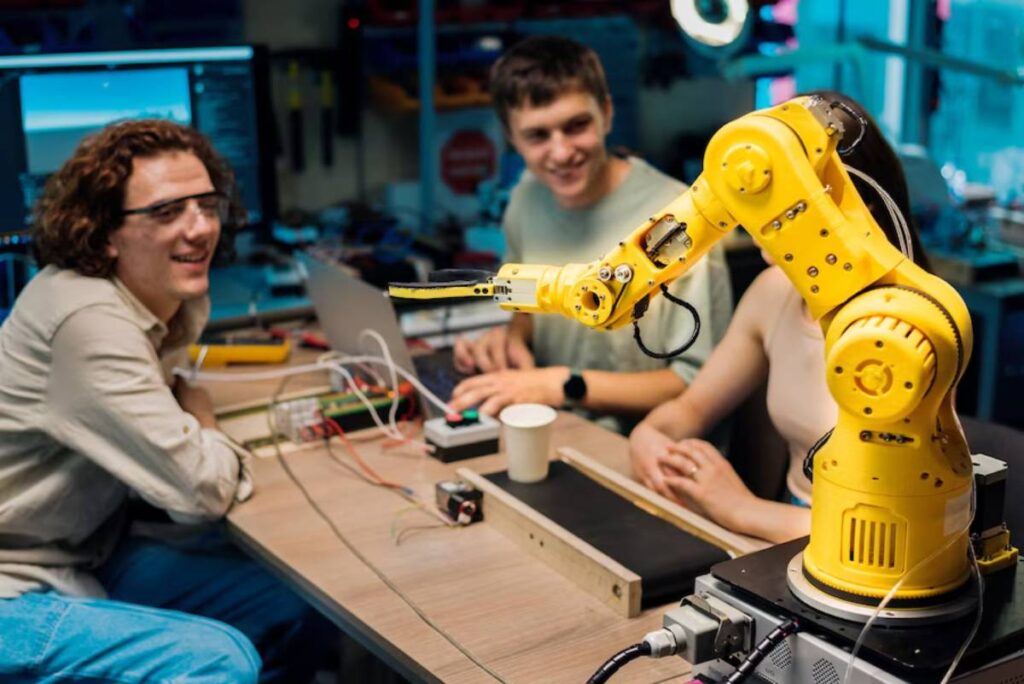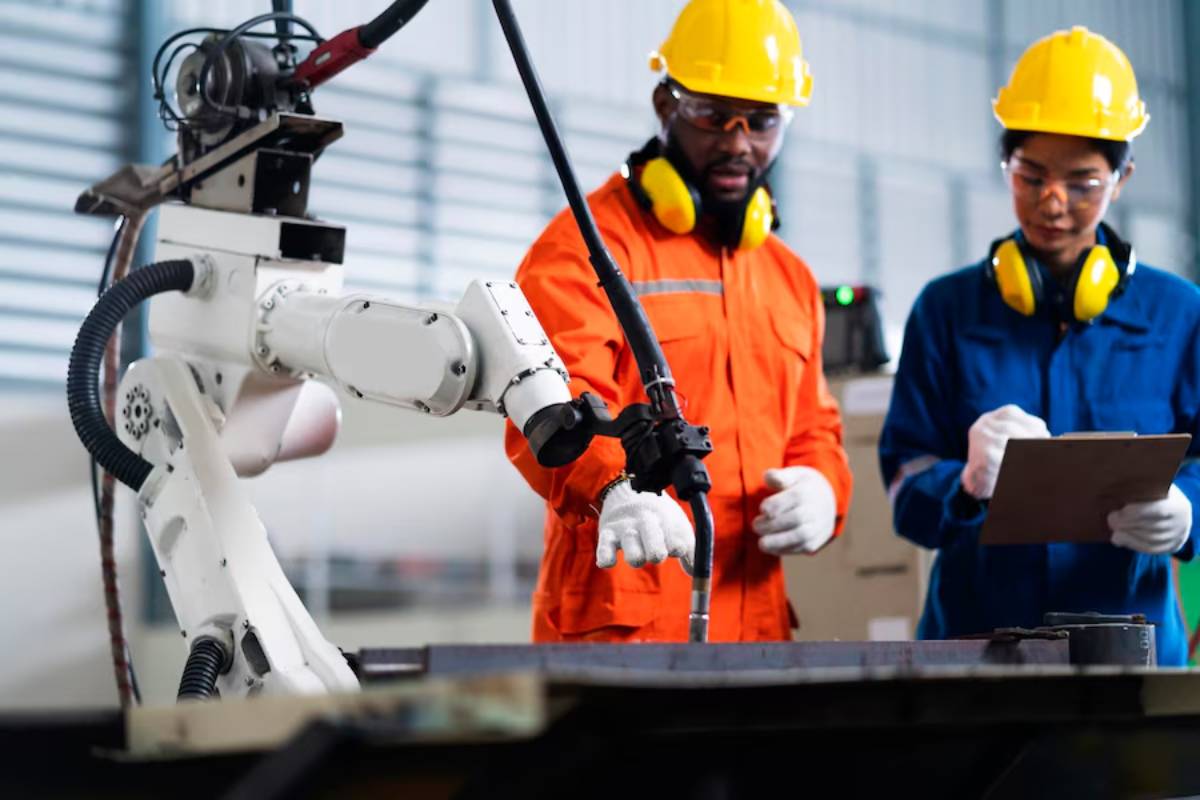The Technology Blog

Collaborative Robots (Cobots) and Their Role in Small Businesses
In our rapidly changing technology age, collaborative robots, or cobots, are rising. Cobots are different from traditional robots as they work alongside humans. They assist workers rather than displace them. For SMEs, cobots represent an opportunity to increase productivity without sky-high costs. This blog explores the impact cobots have on small businesses, their benefits and challenges, and how they shape the future of work.
Cobots are vital for SMEs. Small businesses must find ways to improve operations and reduce costs in a highly competitive market. IAutomationwith cobots is the safe way forward. Yet there are many misconceptions about them. Some people believe cobots are too complicated or costly. This piece is meant to dispel those myths.
Key Benefits / Why It Matters
Enhanced Productivity and Efficiency
A major benefit of cobots is the boost in productivity. Cobots handle repetitive tasks, allowing workers to focus on more complex jobs. This division of labour increases output and job satisfaction, and employees enjoy less monotony in their work.
A study by the International Federation of Robotics found that businesses using cobots saw a 30% productivity increase in the first year. This shows how transformative cobots can be for SMEs.
Cost-Effectiveness
Many believe that using cobots is costly, but that’s not true. Cobots are designed to be budget-friendly. Many models cost much less than traditional industrial robots. This affordability makes them accessible for small businesses, helping them compete with larger firms that have automated for years.
Cobots are also easy to program and need little maintenance, which lowers ownership costs. For budget-conscious SMEs, this cost-effectiveness is a strong reason to adopt cobots.

Flexibility and Scalability
Cobots are flexible and can perform various tasks across industries. Whether in manufacturing, packaging, or services, they can be reprogrammed to meet changing needs. This adaptability is crucial for small businesses facing fluctuating demands.
Additionally, cobots are scalable. SMEs can start small and expand their automation as they grow, ensuring that cobots remain useful throughout a business’s life.
Improved Workplace Safety
Safety is critical in any workplace, and cobots are built with this in mind. They have advanced sensors that detect human presence and adjust operations to prevent accidents. This feature enhances safety and fosters a collaborative atmosphere between humans and robots.
For small businesses, the safety benefits lead to fewer injuries and lower costs like medical bills and downtime. Cobots help create a healthier, more productive work environment by prioritising safety.
Additional Expert Tips & Common Mistakes to Avoid
Best Practices for Implementing Cobots
To get the most from cobots, SMEs should follow best practices. First, a needs assessment should be conducted to find tasks that could benefit from automation. This assessment should consider task complexity, frequency, and potential human error.
Next, proper training for employees working with cobots must be provided. Training should cover cobots’ capabilities, limitations, and safety protocols. Empowering employees with knowledge fosters a positive attitude toward automation and promotes collaboration.
Common Mistakes and Misconceptions
Despite their advantages, businesses often fall for misconceptions about cobots. One standard error is thinking cobots can completely replace human workers. While they excel at repetitive tasks, they lack human creativity and problem-solving skills. Thus, businesses should see cobots as tools that complement human labour.
Another mistake is underestimating the need for regular maintenance and updates. Like any tech, cobots need upkeep to perform well. Skipping maintenance can lead to lower efficiency and breakdowns, wasting automation benefits.
Advanced Insights / Expert Recommendations
Leveraging Data for Continuous Improvement
Cobots can collect and analyse data, a lesser-known advantage. SMEs can use this data to gain insights into operations, identify improvement areas, and make better decisions. For example, cobot data can show production cycle patterns, pinpoint bottlenecks, and suggest optimisation strategies.
To harness data effectively, businesses should invest in analytics tools and promote a culture of continuous improvement. Doing so helps them stay ahead and drive innovation.

Collaborating with Industry Experts
Given the complexity of automation, small businesses should work with industry experts when implementing cobots. These experts can help them choose the right cobots, provide technical support, and ensure compliance with industry standards.
Partnering with experts helps SMEs reduce risks and maximise returns on their cobot investments. It also facilitates knowledge transfer, assisting businesses in building internal skills and lessening reliance on external support.
Embracing Cobots for a Smarter Future
To summarise, collaborative robots are changing the landscape for small businesses. There are advantages such as improved productivity and safer work environments. This leads to high efficiency and competitiveness as the online world continues to dominate.
If you’re thinking about introducing cobots, do so strategically. Be mindful of best practices and potential pitfalls. Cobots are not a panacea, so proper planning is essential.
Discover the possibilities of cobots and begin your journey into automation. Whether you are looking to increase productivity, reduce expenses, or enhance safety, cobots can help you achieve them. Keeping up with collaborative robots may be the envy of a successful firm in a competitive marketplace.
What do you think of cobots in small businesses? Have you considered implementing them? Let us know about your experiences in the comments!









